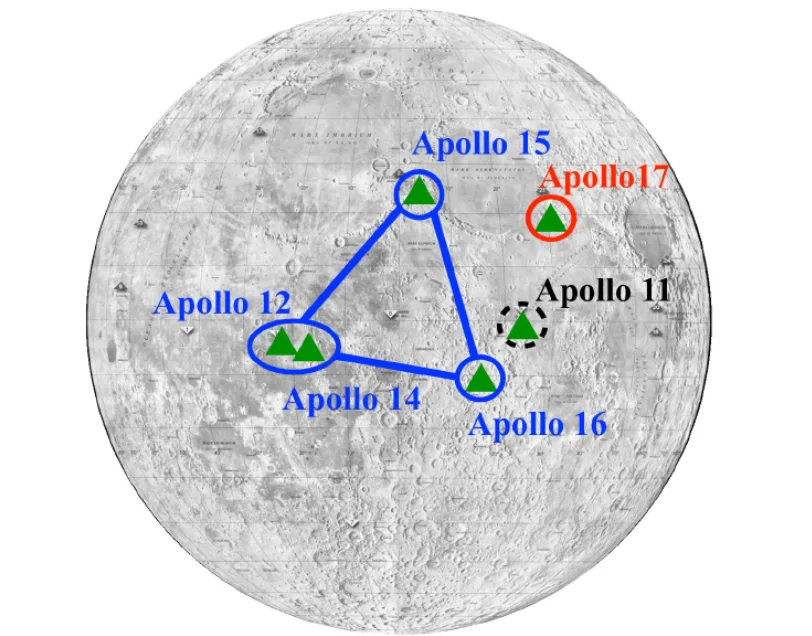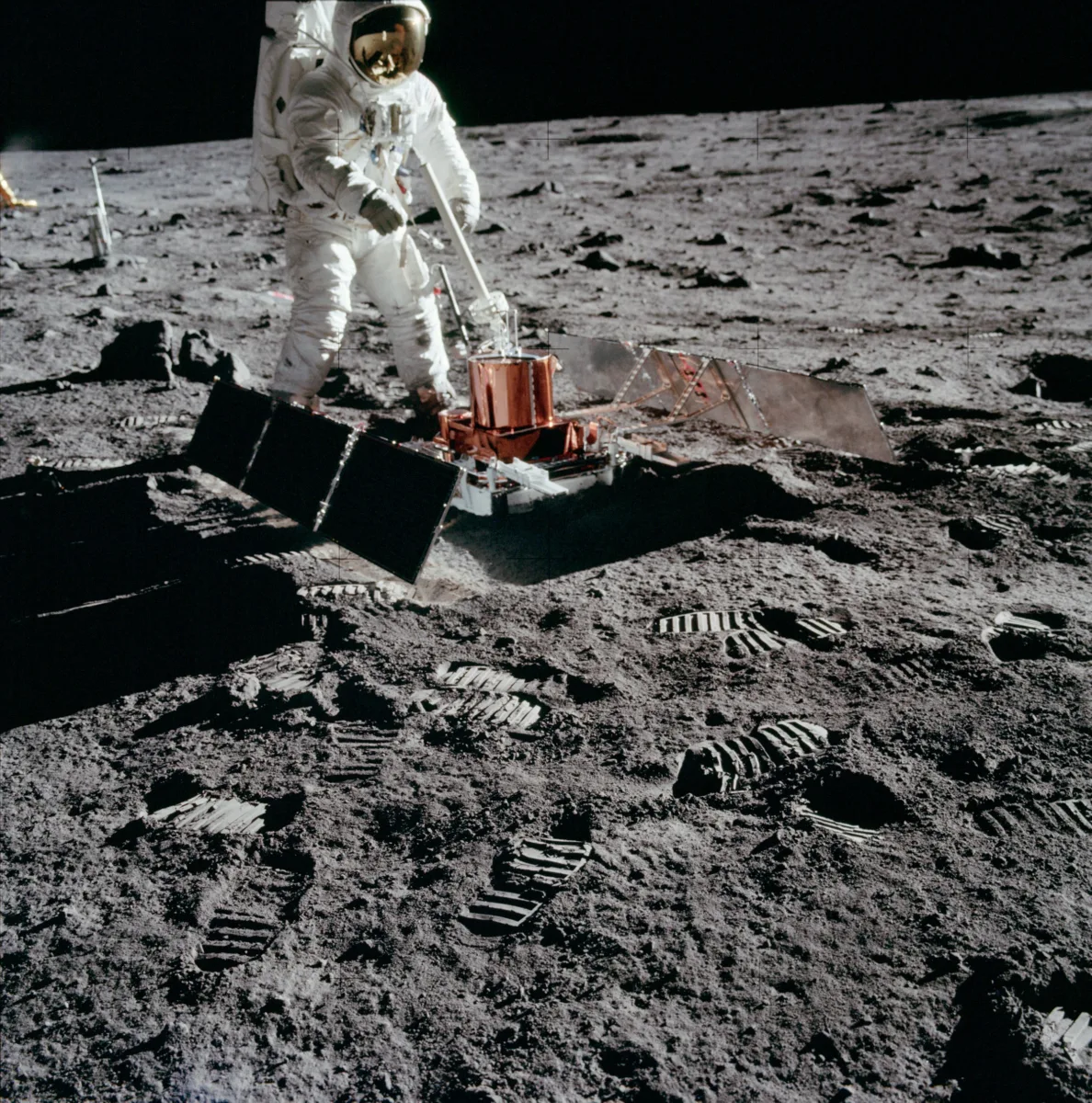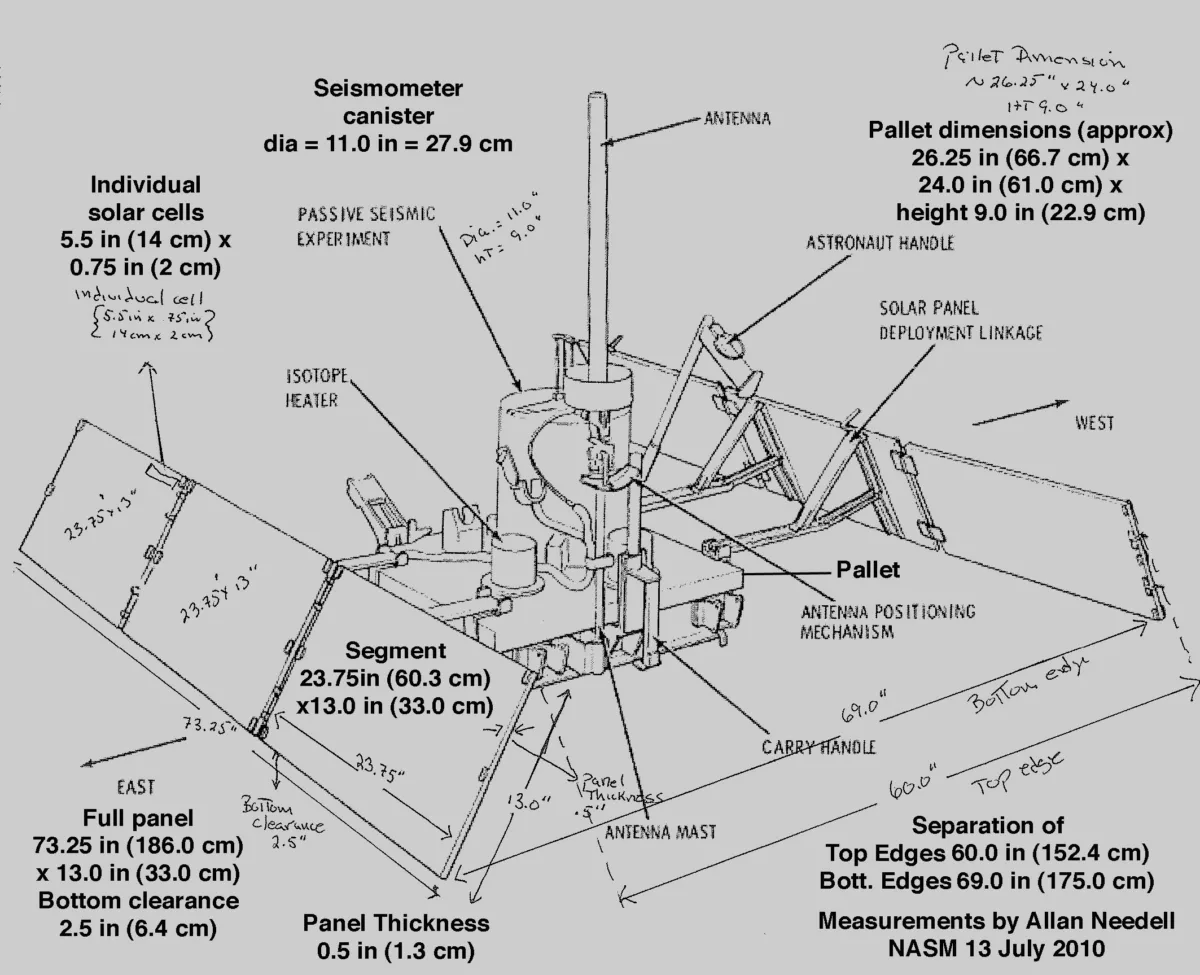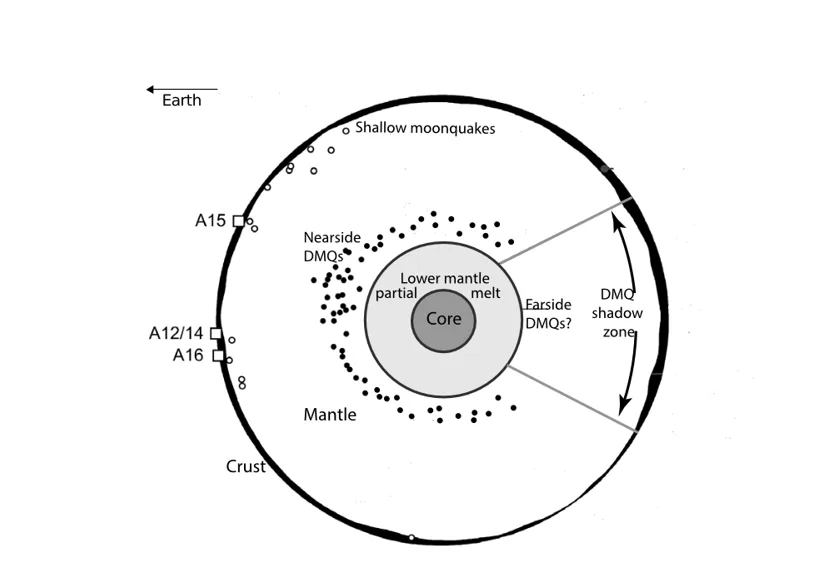Is the Moon similar to Earth? Does it have active plate tectonics just like Earth? Thousands of moonquakes — the equivalent of an earthquake — have been detected on the nearside of the Moon. Those moonquakes have allowed us to image the Moon’s interior and understand its structure.
A series of five missions deployed a lunar geophysical network from 1969 to 1972 that operated until 1977. The goal that motivated scientists to deploy the lunar geophysical network was to study the Moon’s internal layers, characterize seismic activity, monitor meteoroid impacts, and provide data for human exploration.

The Apollo Lunar Seismic Experiments Package deployed several experiments: passive seismic experiments, active source experiments, and gravimeters.
The passive seismic experiment was the first to be deployed in 1969. This was the first pair of “ears” set out to detect any rumbling or vibrations throughout the Moon that can be detected as seismic activity, allowing us to study the geophysics of the Moon in more detail. Unlike passive measurements of seismic data produced by moonquakes, active source experiments on the lunar surface used a thumper and explosives as the source of seismic energy. This measured the properties of the subsurface near the landing sites.
Both seismic experiments used geophones — sensors that measure surface vibrations similar to how a stethoscope listens to patients’ heartbeats. But in addition, gravimeters were used to measure variations of gravitational strength in order to study the Moon’s gravitational field and learn about the local bedrock.


The Apollo passive seismic experiments deployed on the lunar surface helped determine the internal structure of the Moon. The Moon’s internal structure is similar to the Earth’s since it has a crust, mantle, and core. The core may even be divided into a liquid outer core and solid inner core.
Whether on the Earth or the Moon, internal structure can be determined by measuring P- and S-wave velocities. P waves travel faster and travel through solid and liquid mediums while S waves travel slower and only travel through solid mediums. This gives us an easy way to identify a liquid outer core, for example. These seismic velocities help determine differences in composition and the porosity of each individual structural layer. Lunar bedrock turned out to have a high porosity likely caused by violent impacts early in its history.
Moonquakes
How are moonquakes different from earthquakes? The Moon does not have plate tectonics, so moonquakes have different mechanisms. For example: Moonquakes are classified into shallow moonquakes, deep moonquakes, artificial impacts, meteoroid impacts, and thermal moonquakes.

Shallow moonquakes have a partly tectonic origin — related to the contraction of the Moon over its history — and are estimated to occur between depths of 0 and 168 km. They are also thought to have a contribution from the tidal stress that builds up over time due to the Earth’s gravitational pull, causing cracks similar to faults. The shallow moonquakes that were detected had magnitudes ranging from 3.6 to 5.8, similar to small up to moderate earthquakes on Earth.
Deep moonquakes can range from a depth of 700 km to 1,200 km, have low magnitudes, and are probably primarily caused by the gravitational pull of Earth.
Thermal quakes are caused by temperature changes along the lunar surface during sunrise and sunset. Natural impacts include celestial bodies like meteoroids impacting the lunar surface. More than 1,700 events recorded by Apollo were caused by lunar impacts. In addition, artificial impacts were created by deliberately crashing several lunar modules and Saturn third stage boosters.

Our understanding of the Moon has changed over time since waveforms registered on the first seismometers deployed during the 1960s. A mission scheduled for 2026 will include a farside seismic suite to study Schröodinger basin, and will focus on recording the first seismic background noise caused by small celestial bodies. The Apollo missions were over 50 years ago, and now in 2025 and beyond geophysical studies are still being developed to further research the Moon’s internal structure.

